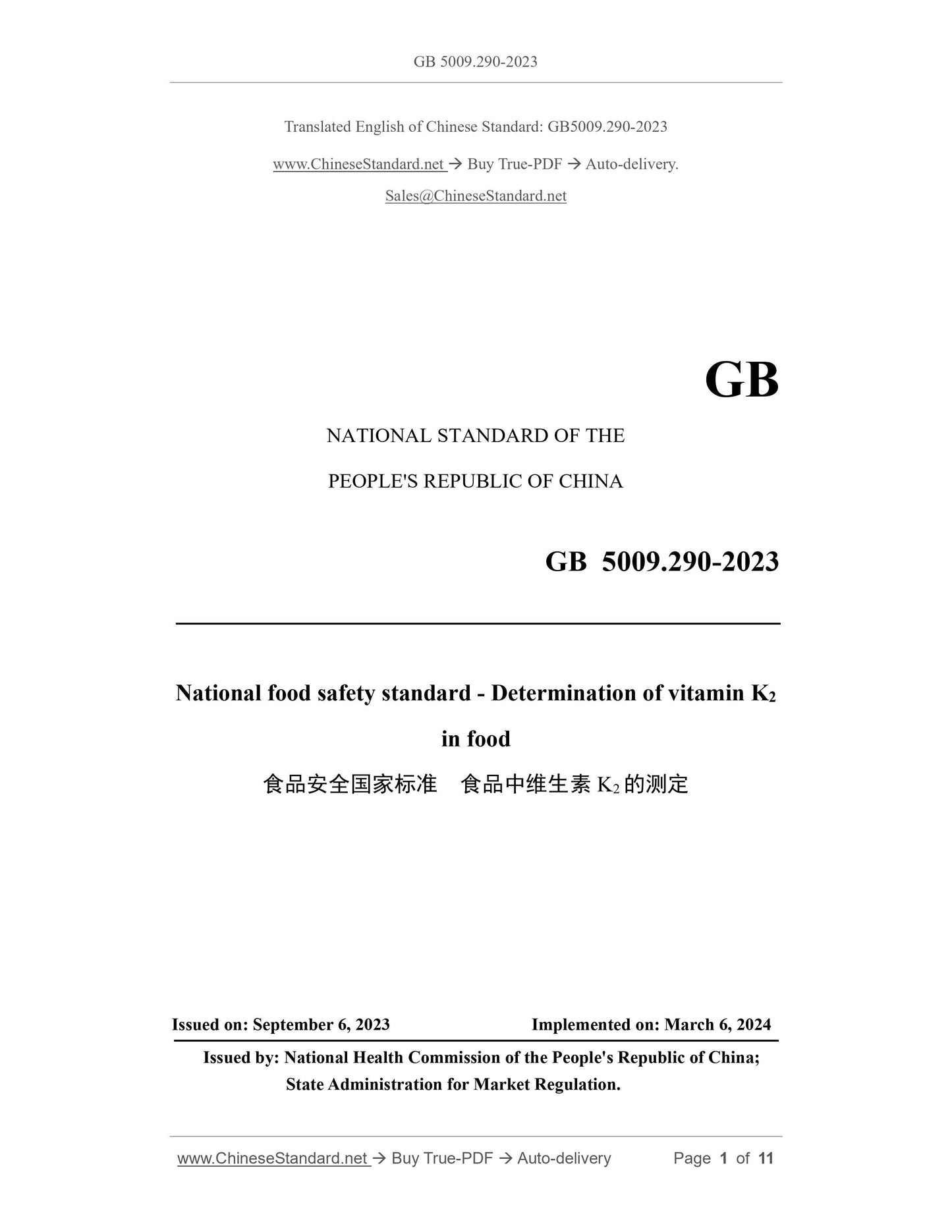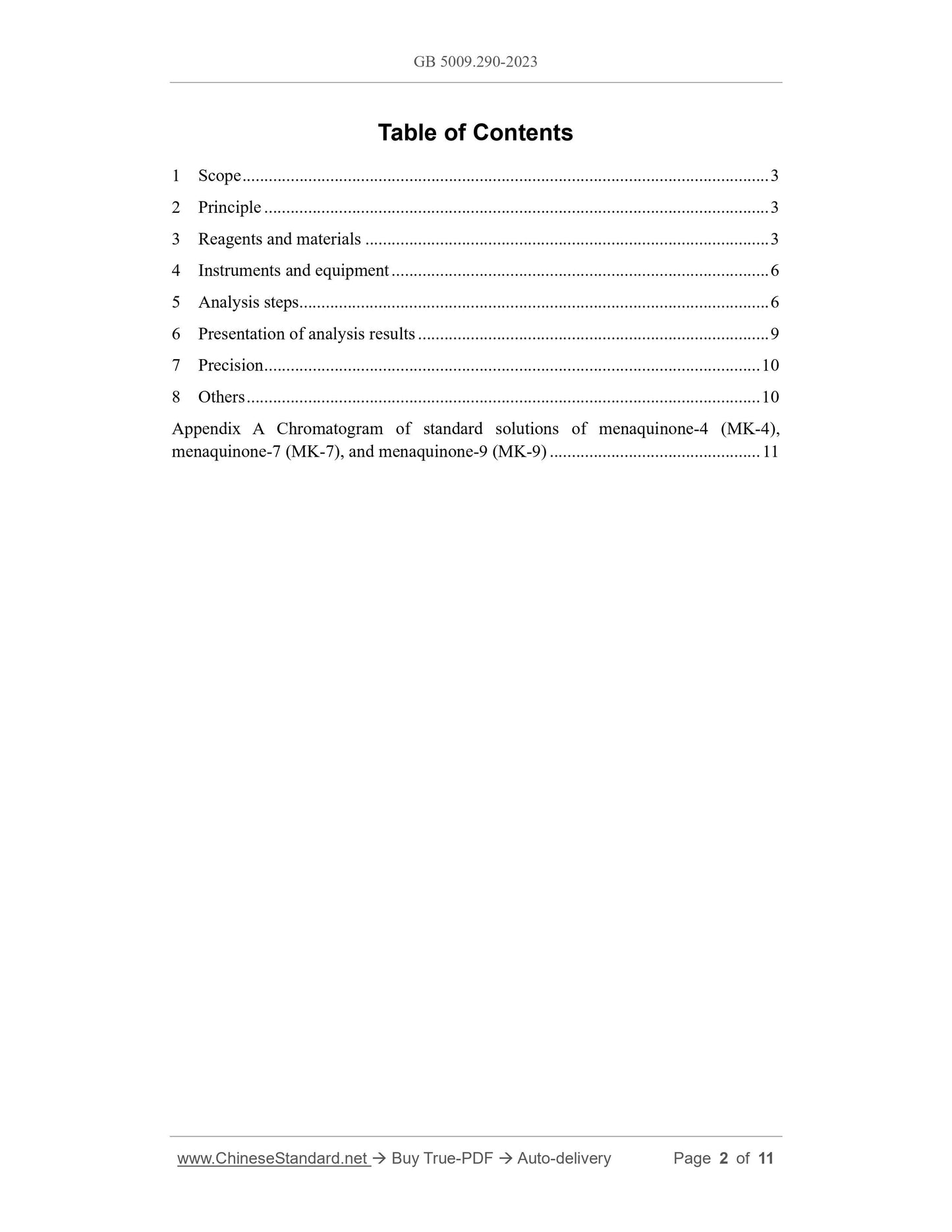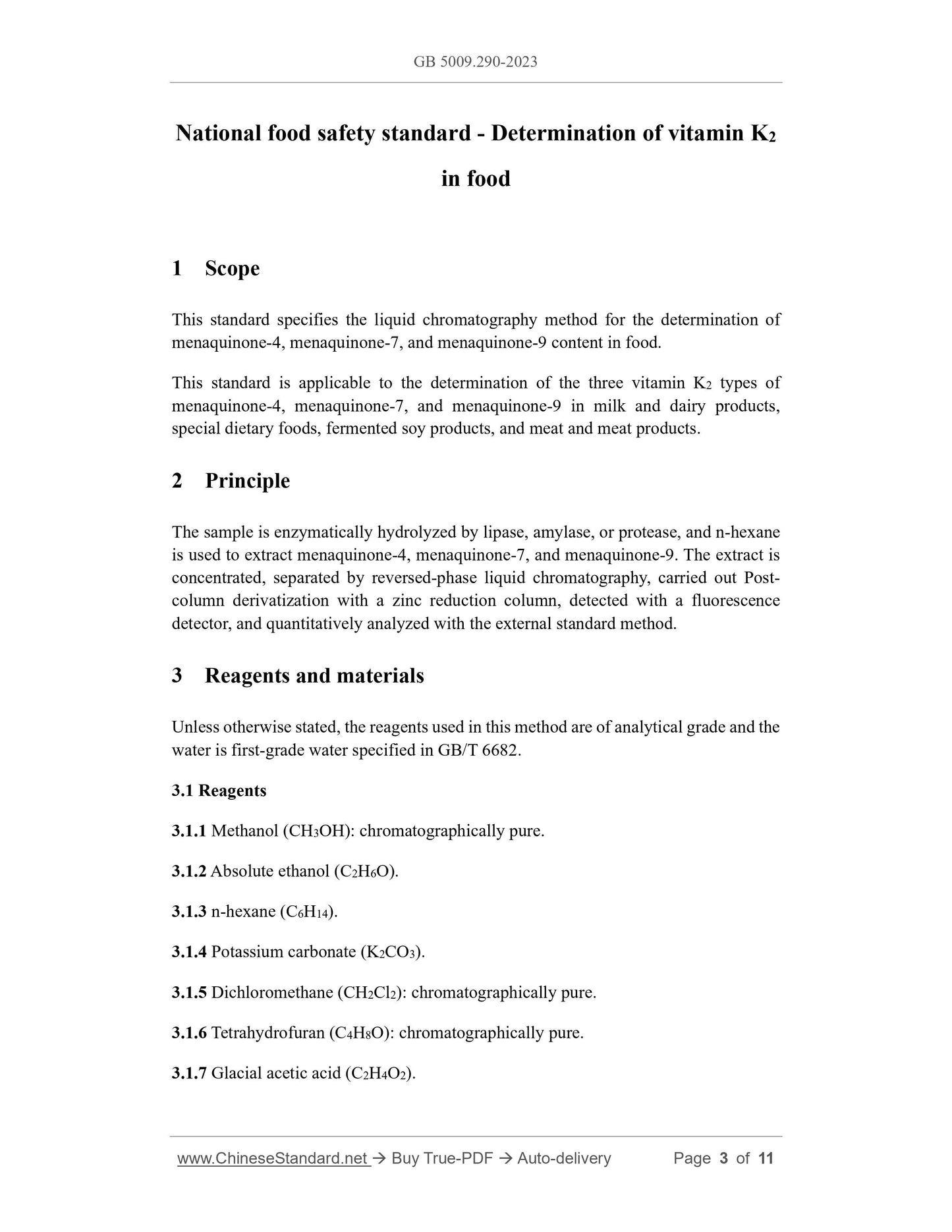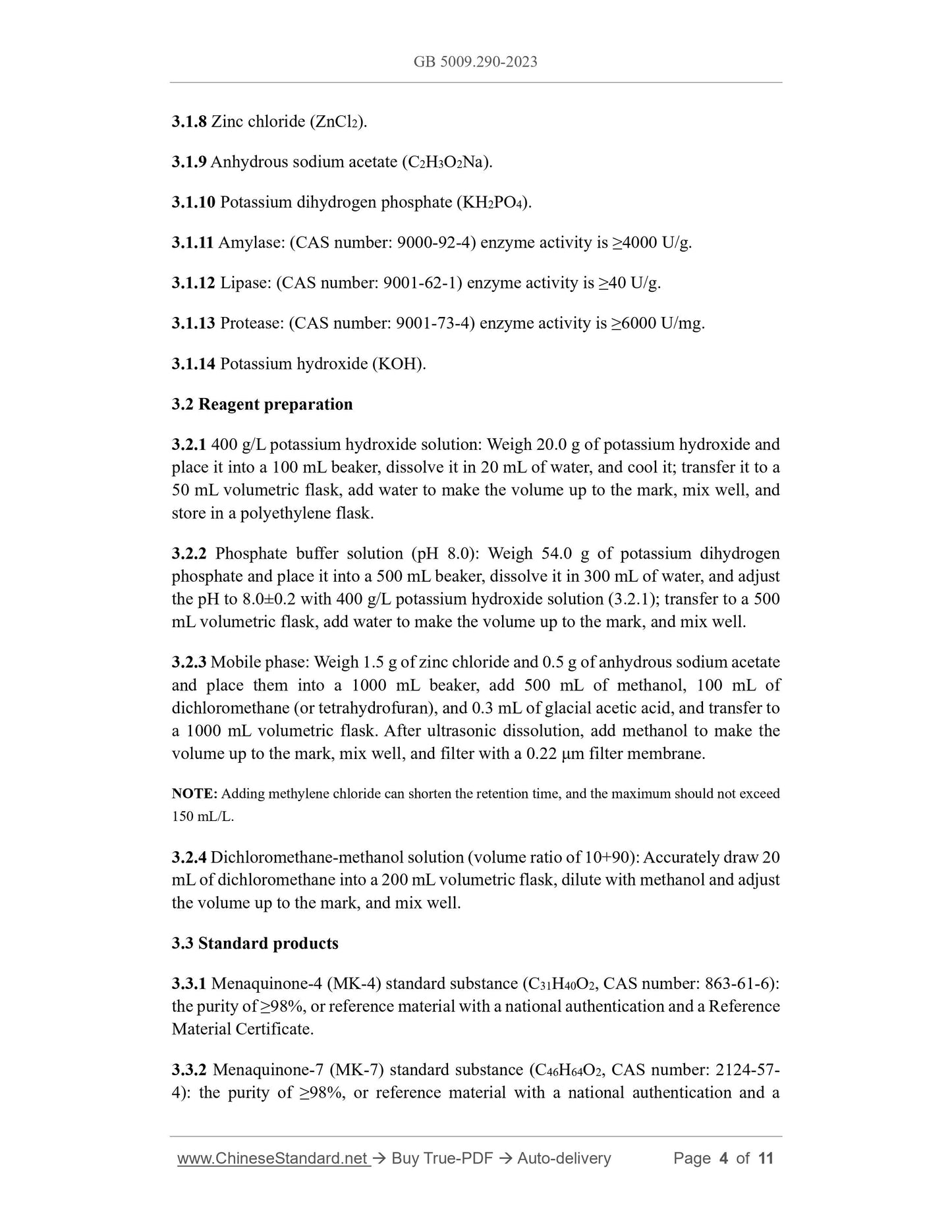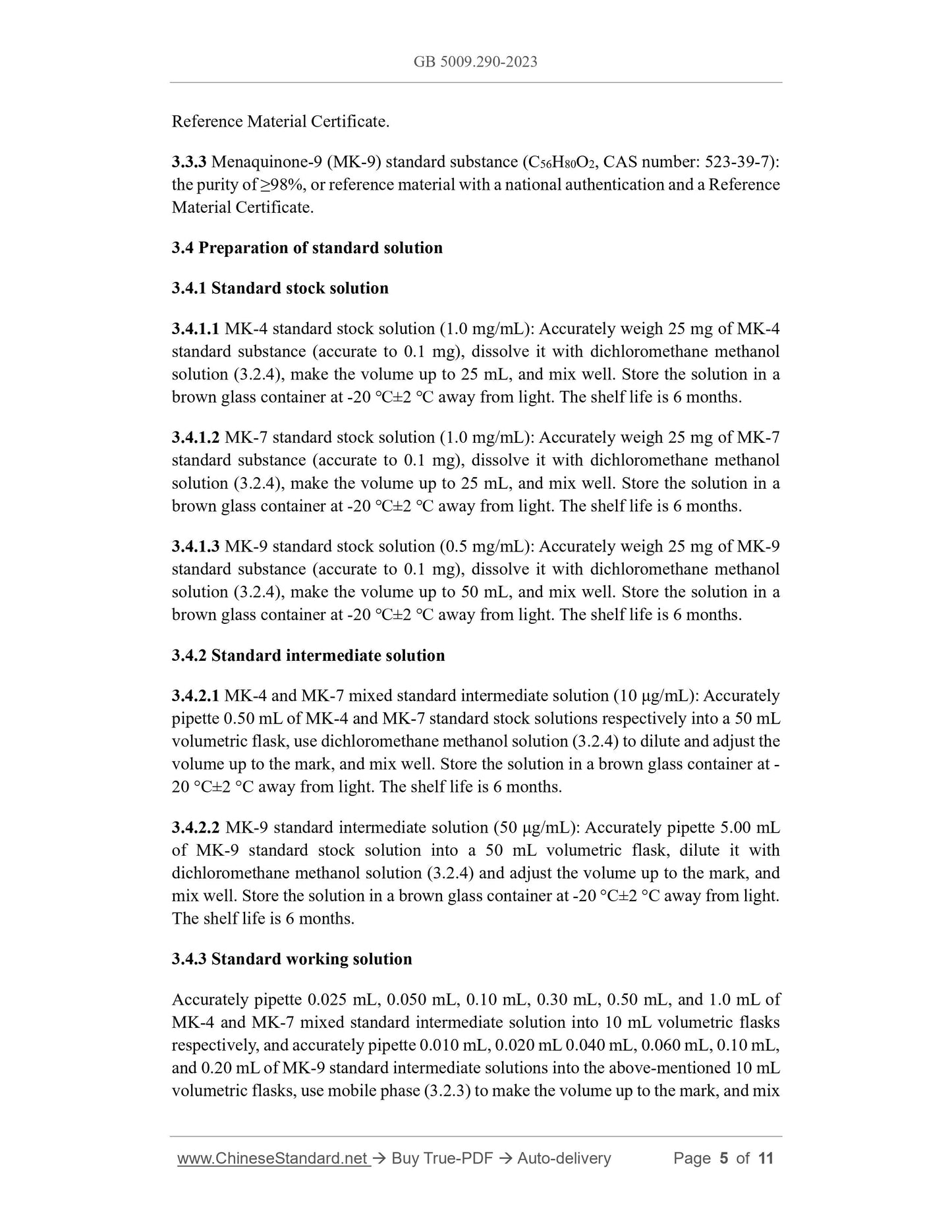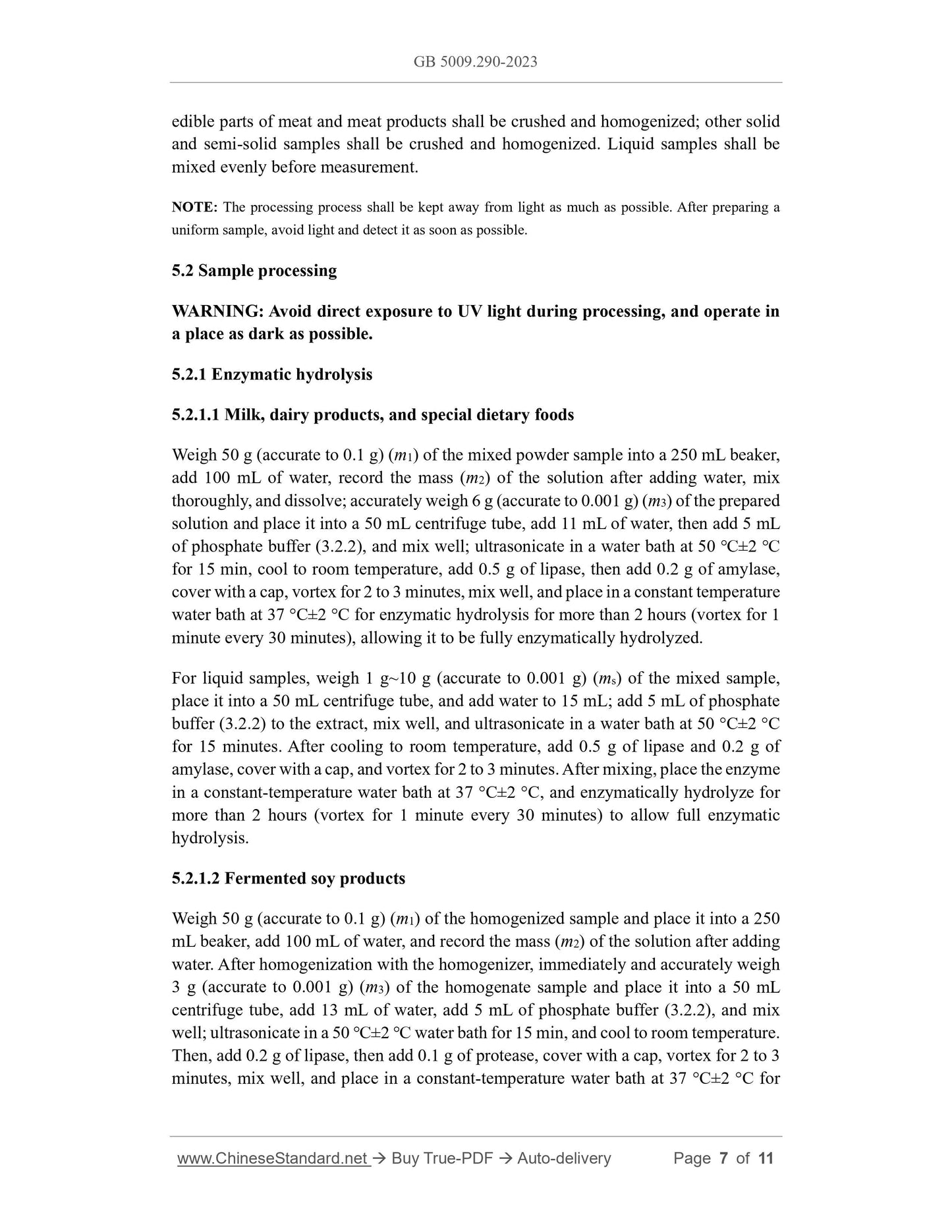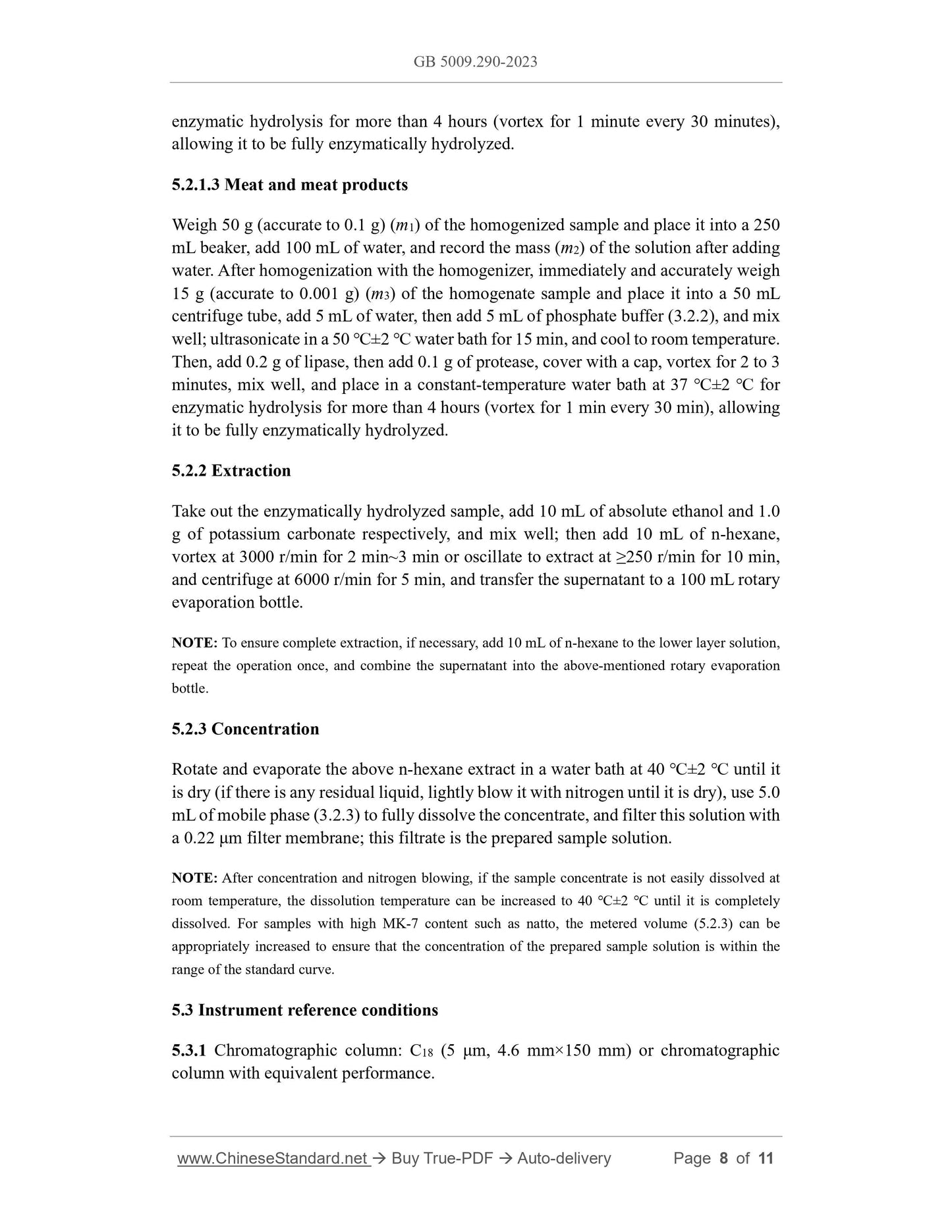1
/
of
7
www.ChineseStandard.us -- Field Test Asia Pte. Ltd.
GB 5009.290-2023 English PDF
GB 5009.290-2023 English PDF
Regular price
$140.00
Regular price
Sale price
$140.00
Unit price
/
per
Shipping calculated at checkout.
Couldn't load pickup availability
GB 5009.290-2023: National food safety standard - Determination of Vitamin K2 in foods
Delivery: 9 seconds. Download (and Email) true-PDF + Invoice.Get Quotation: Click GB 5009.290-2023 (Self-service in 1-minute)
Newer / historical versions: GB 5009.290-2023
Preview True-PDF
Scope
This standard specifies the liquid chromatography method for the determination ofmenaquinone-4, menaquinone-7, and menaquinone-9 content in food.
This standard is applicable to the determination of the three vitamin K2 types of
menaquinone-4, menaquinone-7, and menaquinone-9 in milk and dairy products,
special dietary foods, fermented soy products, and meat and meat products.
Basic Data
| Standard ID | GB 5009.290-2023 (GB5009.290-2023) |
| Description (Translated English) | National food safety standard - Determination of tin in foods |
| Sector / Industry | National Standard |
| Classification of Chinese Standard | X09 |
| Word Count Estimation | 11,190 |
| Date of Issue | 2023-09-06 |
| Date of Implementation | 2024-03-06 |
| Issuing agency(ies) | National Health Commission of the People's Republic of China, State Administration for Market Regulation |
| Summary | This standard specifies the methods for the determination of hydride atomic fluorescence spectrometry, inductively coupled plasma mass spectrometry and inductively coupled plasma emission spectrometry of tin in food. This standard applies to the determination of tin in food. |
Share
